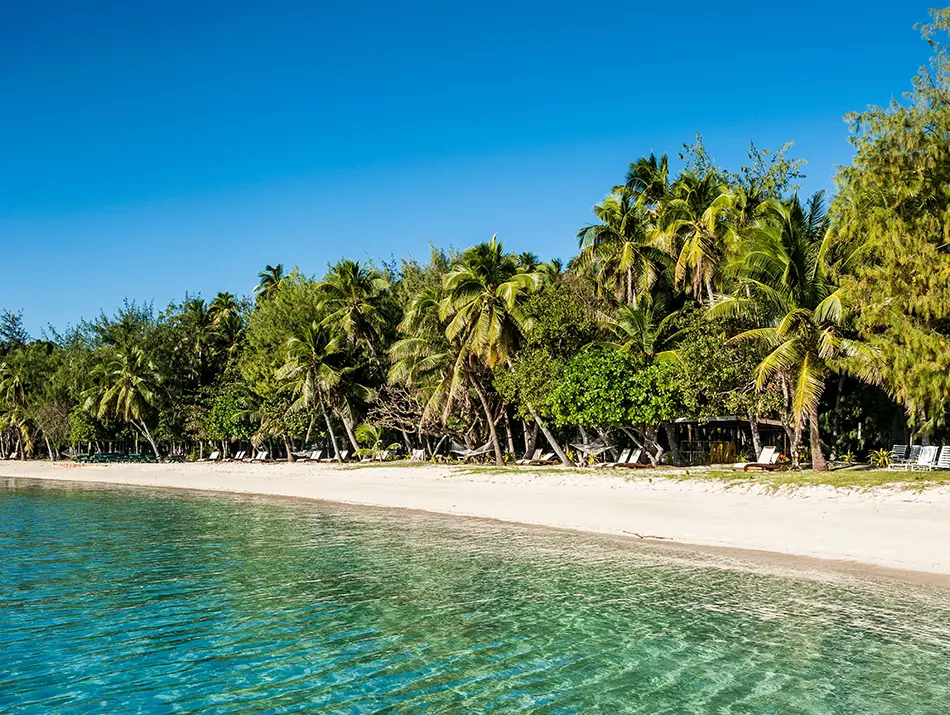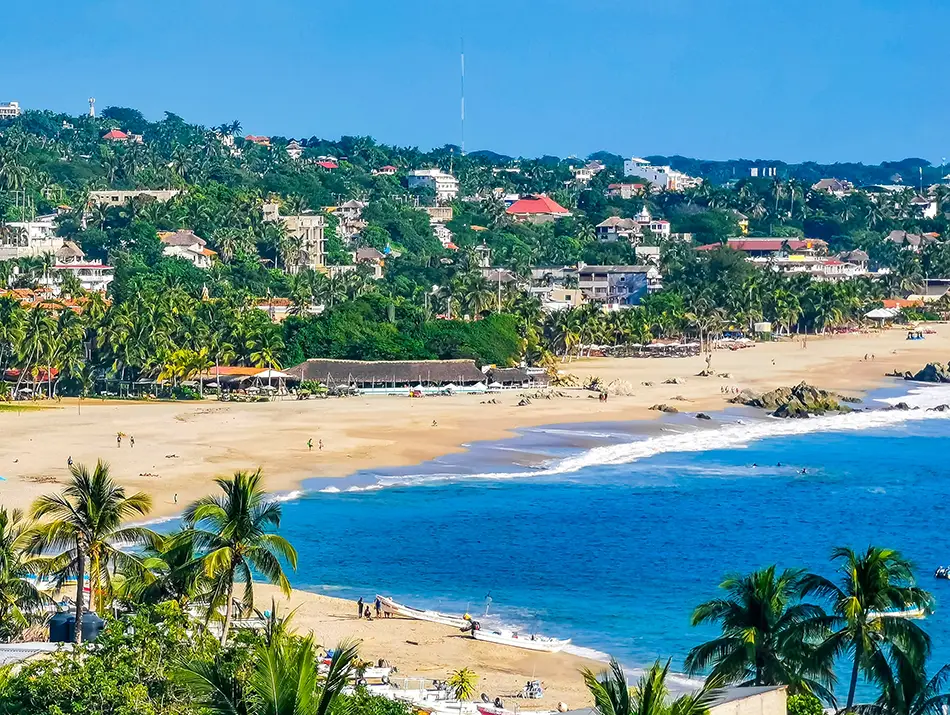As 2025 comes to an end, it’s the ideal time to start planning the adventures of the year ahead. And as more travelers choose to explore the world responsibly, these sustainable travel destinations in 2026 offer the perfect inspiration.
From ocean sanctuaries to cultural heartlands, each place shows that meaningful journeys can be exciting, authentic, and kind to the planet. Take a moment to explore, see which destination resonates with you, and consider making your next trip one that gives back.
1. Dominica: Pioneering Ocean Protection in the Caribbean

By 2026, the island’s groundbreaking sperm whale reserve, announced in late 2023, will protect about 800 square kilometers (309 square miles) of ocean. The reserve will limit boat traffic and regulate tours so visitors can observe the whales responsibly while directly supporting their protection.
Beyond the whales, Dominica carries the same spirit of care to other experiences. Travelers can join reforestation hikes, help restore coral reefs, and take part in community eco-projects.
- Best Time to Visit: December to May for drier weather and prime whale sightings. Shoulder seasons like November offer fewer crowds.
- Sustainable Arrival: Fly into Douglas-Charles Airport via regional carriers with offset programs. Use shared shuttles or electric rentals to explore.
- Must-Do Eco-Activity: Guided Boiling Lake hike (4 miles/6.4 km round-trip). Book with local operators who donate trail fees to habitat projects.
2. Akagera National Park, Rwanda: Africa’s Revived Wildlife Haven

Rwanda’s Akagera National Park covers 400 square miles (1,035 square kilometers) of lakes, wetlands, and open grasslands filled with wildlife. Elephant herds move through the savanna, and flashes of blue from kingfishers hunting along the water’s edge bring color to the scene.
In recent years, Akagera has become a true conservation success story. After rhinos disappeared from the region for decades, the park began bringing them back through carefully managed reintroductions. Thirty white rhinos arrived in 2021, followed by another seventy in 2025. These efforts have restored balance to the ecosystem and turned Akagera into one of Africa’s leading examples of responsible wildlife tourism.
For travelers seeking sustainable travel destinations, Akagera offers both adventure and purpose. Guided walking safaris reveal how the land is being restored, while ranger talks shed light on anti-poaching work. Many local camps rely on rainwater systems and employ staff from nearby villages, creating a direct link between conservation and community wellbeing.
- Best Time to Visit: June to October for dry-season game viewing. July peaks with bird migrations.
- Sustainable Arrival: Direct flights to Kigale International, then eco-vans (about 2.5 hours) with park partners to cut emissions.
- Must-Do Eco-Activity: Take a night drive with headlamps to spot nocturnal animals, and know that your fee helps fund ranger training.
3. Uluru-Kata Tjuta National Park, Australia: Sacred Lands and Cultural Stewardship

In the heart of Australia’s Red Centre lies Uluru–Kata Tjuta, a spiritual landscape where rust-red monoliths glow under vast desert skies. This UNESCO World Heritage site is jointly managed with the Anangu, the region’s Traditional Owners and custodians of its stories and sacred sites. For thousands of years, they have cared for this land, keeping culture and nature closely intertwined.
As tourism continues to evolve, 2026 will bring new opportunities to connect more deeply with the region. Multi-day treks and Dreamtime storytelling experiences will invite visitors to learn about the Anangu worldview while supporting Indigenous communities.
For travelers seeking a slower pace, Uluru offers moments of quiet reflection. You can join dawn hikes to discover bush tucker traditions or stay off-grid in eco-lodges that mirror the calm of the desert. Together, these experiences at Uluru remind us that true sustainability grows from respect for the land, its people, and the stories that continue to shape it.
- Best Time to Visit: May to September for cooler temps (under 80°F/27°C).
- Sustainable Arrival: Fly to Ayers Rock Airport on low-emission routes, then shuttle to park hubs (20 minutes).
- Must-Do Eco-Activity: Hike the Valley of the Winds trail (7 miles/11 kilometers). Stay on marked paths and learn about Anangu fire management along the way.
4. Guimarães, Portugal: An Urban Pioneer in Sustainable Tourism

In northern Portugal, Guimarães blends medieval charm with modern sustainability as it prepares to become Europe’s Green Capital in 2026. The city’s bike-friendly boulevards, carbon-neutral goals, and eco-conscious planning bring new energy to its historic streets. As you explore the UNESCO-listed old town, you’ll pass stone archways, shaded courtyards, and lively cafés.
For travelers planning a European getaway, Guimarães stands out among sustainable travel destinations for its balance of history and innovation. You can follow e-bike routes that wind through nearby parks or join zero-waste workshops set in beautifully restored buildings. Many local stays are connected to surrounding farms, creating a direct link between visitors and the region’s traditions. Together, these experiences show how a city break can nourish both the traveler and the planet.
- Best Time to Visit: April to June or September for mild weather (60–75°F/16–24°C) and festivals.
- Sustainable Arrival: Train from Porto (1 hour) on electric lines, or e-bikes from the station.
- Must-Do Eco-Activity: Green corridor rides (10 miles/16 km) to Peneda-Gerês—rent via city apps.
5. Fiji: Island Paradises with Hands-On Conservation

With more than 300 islands surrounded by coral lagoons, Fiji invites barefoot bliss and a slower way of travel. In 2026, many resorts will expand their hands-on conservation programs. Guests will be able to take part in coral planting, mangrove restoration, and beach cleanups. These experiences allow travelers to relax while directly contributing to the islands’ fragile ecosystems.
For those dreaming of a Pacific escape, Fiji’s community-led tourism makes giving back part of the adventure. You might join a manta ray swim that funds reef protection or share a meal at a local co-op celebrating sustainable fishing traditions. In the end, Fiji shows how meaningful travel can blend joy, connection, and environmental care beneath its turquoise horizons.
- Best Time to Visit: May to October for dry, sunny days (75–85°F/24–29°C) and calm seas.
- Sustainable Arrival: Flights to Nadi International, then solar ferries or electric shuttles to outer islands.
- Must-Do Eco-Activity: Join a coral-planting dive ($100/€92) with certified guides.
6. Québec, Canada: Indigenous Wisdom in Vast Wilderness

In Québec’s vast north, Nibiischii Park stretches across Cree territory, where the land is jointly managed by the Cree Nation and local authorities. This region invites visitors to discover Indigenous traditions through fireside storytelling and canoe journeys that honor ancestral ways. From the stillness of boreal forests to the creativity of Québec’s urban arts hubs, every setting reveals a different side of the province’s spirit.
For travelers planning a North American escape, Québec offers one of the most authentic sustainable travel destinations, where Indigenous heritage and natural beauty come together. Local guides lead workshops on traditional harvesting, and in winter, light shows illuminate the northern sky. These experiences invite visitors to explore with purpose, combining adventure with cultural respect and humility.
- Best Time to Visit: June to August for hiking. December to March for northern lights.
- Sustainable Arrival: VIA Rail trains to Montréal, then electric buses north (carbon offsets available).
- Must-Do Eco-Activity: Paddle along the Rupert River on guided canoe trips ($75/€69 per day) and learn traditional Cree paddling and navigation techniques.
7. Coastal Oaxaca, Mexico: Surfing Sanctuaries and Community Shores

On Mexico’s southern Pacific coast, the state of Oaxaca stretches for about 150 miles (241 kilometers), where golden beaches meet rolling dunes and vibrant surf towns. One of its highlights, Puerto Escondido, has been nominated to become the 14th World Surfing Reserve, with formal recognition expected in 2026. The designation reflects the region’s strong commitment to protecting its surf breaks, marine life, and coastal traditions.
For travelers seeking a laid-back yet purposeful escape, Oaxaca’s coast offers a perfect balance between relaxation and sustainability. You can practice yoga beside glowing bioluminescent bays, visit local cooperatives that preserve traditional weaving, or simply enjoy the rhythm of daily life by the sea. As you plan your next sustainable getaway, imagine waves that not only wash away worries but also help protect the shores that make Oaxaca so special.
- Best Time to Visit: November to April for surf swells and dry spells (70–85°F/21–29°C).
- Sustainable Arrival: Flights to Puerto Escondido, followed by shared vans or bikes from the airport.
- Must-Do Eco-Activity: Join a local turtle patrol ($20/about €18) to help monitor nesting beaches.
Make 2026 the Year You Explore Sustainable Travel Destinations

Each of these sustainable travel destinations shows that exploring the world can go hand in hand with protecting it. Whether it’s supporting local guides in Rwanda, learning traditional knowledge in Australia, or helping restore reefs in Fiji, every journey has the power to make a difference.
As you plan the year ahead, choose experiences that give back to the places you visit and the people who call them home. For more tips on how to travel responsibly, explore our Sustainable Travel Guide. Travel thoughtfully, and let 2026 be the year your adventures truly sustain the world that inspires them.










